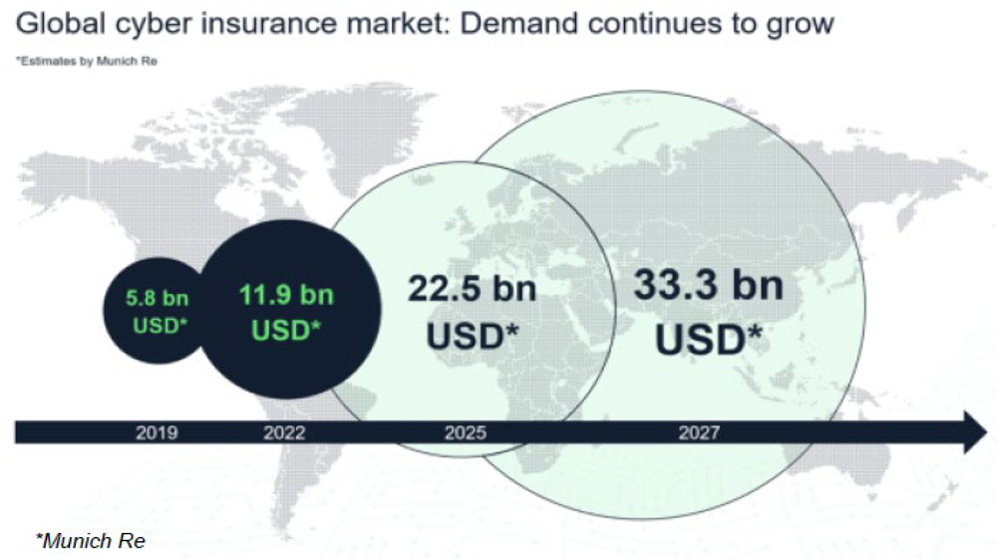No insurance company, no matter how big or small, is invulnerable to insurance fraud. The National Insurance Crime Bureau (NICB) — the property-casualty industry’s not-for-profit national fraud-fighting organization — is constantly adapting its methods to battle this insidious crime, relying in large part on advances in technology, the use of big data, and advanced investigative techniques. Yet, criminals are more sophisticated than ever, making the jobs of our nearly 400 employees, member company special investigators and our law enforcement partners tougher every day.
The good news in the vehicle-theft arena is that anti-theft technology has made stealing a car quite a bit more difficult than in the days of “jimmying” door locks and hot-wiring ignitions. Keyless technology means (almost always) that the person with the fob is the only one who can open or start the car. Our analysis shows that since the advent of this technology in the late 1990s, vehicle theft fell from a peak of 1.7 million stolen vehicles per year to fewer than 700,000 in 2013, despite a significant increase in population and vehicle registrations. What this means is that if you own a vehicle, your chances of having it stolen today are significantly less than any other time since 1960.
The “Mystery Device”
As anti-theft technology advances, thieves are always looking for new ways to beat it. One of the most widely publicized new trends in vehicle-related crime is a perfect example. Recent reports tell of thieves using a “mystery device” that appears to use electromagnetic frequencies to pop open car door locks, allowing them to steal personal items left inside without ever having to break a window or jimmy a lock. NICB is working hard with vehicle manufacturers and law enforcement to “beat the technology that beat the technology.”
Identity Fraud
 Even when we outwit the “mystery device,” industrious criminals will continue to find new ways to steal cars, having already turned the act from a blue-collar crime to a white-collar felony. Today’s car thief merely needs a ballpoint pen and basic financial knowledge to walk into a car dealership, present fake identification and sign a loan or lease. By the time a dealership realizes it has been scammed, that brand-new luxury vehicle is hidden in a cargo container bound for a foreign port where it will bring in two or three times the original retail price. Unlike typical auto insurance scams, the victim isn’t the policyholder or even the auto dealership, it’s the bank or finance company that has to write off the loss. In fact, this type of theft is not even counted among national auto theft figures. Legally, it is considered a financial crime.
Even when we outwit the “mystery device,” industrious criminals will continue to find new ways to steal cars, having already turned the act from a blue-collar crime to a white-collar felony. Today’s car thief merely needs a ballpoint pen and basic financial knowledge to walk into a car dealership, present fake identification and sign a loan or lease. By the time a dealership realizes it has been scammed, that brand-new luxury vehicle is hidden in a cargo container bound for a foreign port where it will bring in two or three times the original retail price. Unlike typical auto insurance scams, the victim isn’t the policyholder or even the auto dealership, it’s the bank or finance company that has to write off the loss. In fact, this type of theft is not even counted among national auto theft figures. Legally, it is considered a financial crime.
VIN Cloning
VIN-switching or “cloning” is another growing trend, requiring considerable sophistication. Thieves steal a luxury car, fabricate a new vehicle identification number or VIN plate by copying one from another vehicle of the same make and model, then sell the stolen car. Often, no one is the wiser until at least one party goes to sell the vehicle. NICB agents are experts in identifying cloned vehicles.
Keys Left Inside
One of the newest trends we’re seeing may surprise you because it’s at the opposite end of the “sophistication spectrum.” While national auto theft figures are dropping overall, one type of auto theft is actually rising: thefts due to drivers who leave the keys inside. The sad truth is that regardless of all the anti-theft technology a car may have, it is rendered useless if the driver leaves the keys inside. A recent NICB analysis of FBI crime data shows that between 2012 and 2014, more than 126,000 vehicles were stolen with the keys left inside. That’s an increase from 5.4 percent of all vehicle thefts in 2012 to 6.7 percent of all vehicle thefts in 2014. It just goes to show that we can’t stop driving home the message that drivers still have to employ traditional anti-theft measures, such as locking their doors and windows, removing the keys, not leaving valuables inside and parking in well-lit areas.
The “Craigslist Scam”
NICB also recently issued a warning to used-car buyers referred to as the “Craigslist Scam.” Working with law enforcement agencies across the Midwest, NICB identified nearly 100 cases where private auto sale transactions went sour when phony bank checks were used to pay for the vehicles. One Kentucky couple sold their 2010 Corvette on Craigslist, only to learn that the check that their bank initially said was valid was actually bogus. Fortunately, quick action by law enforcement agencies in Kentucky and Illinois, with assistance from NICB, led to the recovery of the Corvette after it had been picked up, driven to Chicago, and listed for sale again on Craigslist. NICB says these scams may appear legitimate since they are well organized. NICB advises anyone trying to buy or sell a vehicle on Craigslist to follow their very specific guidelines which can be found here: https://www.craigslist.org/about/scams.
“Crash-and-Buy” Schemes
 The state of Maryland may be the first to officially recognize that “crash-and-buy” schemes are growing in the state. Perhaps as a result of the recent financial crisis and strain on many households, more people are opting to go without auto coverage, then buying policies after accidents and filing false claims. No hard data exists on these “crash-and-buy” scams, but the Maryland Insurance Administration says they constitute a quarter of all the fraud investigations it conducts. However, many states don’t even prosecute these crimes criminally. Sometimes insurers discover the fraud before the claim is paid, so no money is lost. But there is little chance of getting the money back once the insurer pays out a dishonest injury or collision claim, so honest policyholders take the hit in higher premiums.
The state of Maryland may be the first to officially recognize that “crash-and-buy” schemes are growing in the state. Perhaps as a result of the recent financial crisis and strain on many households, more people are opting to go without auto coverage, then buying policies after accidents and filing false claims. No hard data exists on these “crash-and-buy” scams, but the Maryland Insurance Administration says they constitute a quarter of all the fraud investigations it conducts. However, many states don’t even prosecute these crimes criminally. Sometimes insurers discover the fraud before the claim is paid, so no money is lost. But there is little chance of getting the money back once the insurer pays out a dishonest injury or collision claim, so honest policyholders take the hit in higher premiums.
Airbag Thefts
While accurate statistics on the number of airbag thefts in the U.S. are lacking, NICB agents see rashes of these thefts occurring sporadically in cities across the country. Thieves may target a particular neighborhood and steal several airbags over the course of a couple weeks. Airbags can be stolen in under a minute and the payoff can be big; thieves can sell them to unscrupulous body shop owners for between $50 and $200 and the body shops then sell them as “new” to unsuspecting customers for upwards of a thousand dollars. Insurance companies have to pay claims from customers whose airbags were stolen, but the costs of this crime can be much higher to victims who unknowingly purchase used airbags that later don’t deploy in a crash.
Airbag thefts don’t always occur where you park your car. They can also occur in body shops by dishonest mechanics. For example, a mechanic may pull out your perfectly intact airbag after you’ve had an accident, then insert a cheap knockoff (or even old rags, cardboard, etc.) and charge the insurance company full price for “replacing” the “damaged” airbag. Another scheme is to remove your intact airbag, replace it with an old deployed one to make it seem like the original inflated during the accident, then re-install your original airbag and charge the insurance company for a new one.
Car owners can avoid the above scenarios by having their cars inspected first by their insurance company estimators and insisting on receiving new airbag replacements.
Towing Scams
 Certain large cities, such as Los Angeles, Houston and Chicago, have been seeing a number of tow truck “bandits.” These unscrupulous operators are tantamount to ambulance chasers; they listen to police scanners for reports of accidents and then show up on the scene, usually before police have even had a chance to take a report. They tell the driver of the damaged vehicle that they have been “authorized” to give them a tow, usually pressuring the victim to sign a release form quickly. Then, off the vehicle goes — and the driver may not find out for days where it is located. At that point, the bandit tow truck company charges inflated towing fees, storage fees and other add-ons. Drivers should never allow their car to be towed by a company that hasn’t been called by their insurance company or the police. Some states have laws to this effect.
Certain large cities, such as Los Angeles, Houston and Chicago, have been seeing a number of tow truck “bandits.” These unscrupulous operators are tantamount to ambulance chasers; they listen to police scanners for reports of accidents and then show up on the scene, usually before police have even had a chance to take a report. They tell the driver of the damaged vehicle that they have been “authorized” to give them a tow, usually pressuring the victim to sign a release form quickly. Then, off the vehicle goes — and the driver may not find out for days where it is located. At that point, the bandit tow truck company charges inflated towing fees, storage fees and other add-ons. Drivers should never allow their car to be towed by a company that hasn’t been called by their insurance company or the police. Some states have laws to this effect.
On the Horizon
One trend on the horizon has to do with the increasing length of car loan terms. While four-year loans were once standard, six-year loans are now common, and seven and eight-year loans are now becoming popular, too, according to a recent report. As the economy improves and car sales increase, it’s likely that thousands of car owners will be underwater on their loans in just a few years from now.
When loan balances are greater than the value of the cars they financed, some drivers will have significant incentive to rid themselves of the financial burden. The result can be cars set on fire, sunk in ponds and lakes, or simply hidden before insurance claims are filed. Insurers may end up paying the price for these long-term loans a few years from now and should be on the lookout for this trend to develop.
In the coming years, criminals will continue finding new ways to ply their craft. NICB will continue to solidify its vast and growing partnerships with law enforcement agencies, manufacturers, legislative bodies and industry groups — and to invest in cutting-edge intelligence and data systems — to protect its member companies and the American public.
Joe Wehrle is president and CEO of the National Insurance Crime Bureau.
Other Insurance Fraud Trends
 PIP Fraud
PIP Fraud
Unlike traditional auto theft, medical fraud has risen dramatically. This type of fraud, such as the abuse of no-fault or personal injury protection (PIP) insurance, often involves organized criminal rings who stage accidents and recruit “victims” to claim phony injuries and big insurance payouts. NICB continues to see a rise in dishonest medical clinics where much more time and expertise is spent filing false insurance claims than actually practicing any form of legitimate medicine.
Medical Billing Fraud
Fortunately, NICB’s Aggregated Medical Database (AMD) has been making vast inroads in identifying potential medical fraud since its creation in 2011. With 33 property-casualty carriers submitting their medical billing data (and more joining soon), the AMD’s analysis has resulted in nearly 2,000 MedAWARESM Alerts identifying over 3,000 providers and nearly 5,000 clinics in 41 states.
These leads reflect over $681 million of medical billing by the providers identified in the MedAWARE Alerts during the time period in which their billing practices were examined. This time period is generally one year in which the dollar value of billing exposure is calculated. The NICB has initiated and concluded cases with successful outcomes based on information contained within the Alerts. More importantly, the information has been valuable to NICB member companies in terms of better identifying providers whose billing practices fall outside the norm, therefore enabling them to successfully pay legitimate claims.
Cargo Theft
Cargo theft continues to pose a serious threat to the U.S. economy, not to mention the insurance industry. As law enforcement resources are stretched, organized criminal rings see cargo theft as a high-reward, low-risk enterprise. NICB agents, deployed in strategic locations throughout the U.S., work with law enforcement and member companies to recover stolen cargo and dismantle the crime rings.












